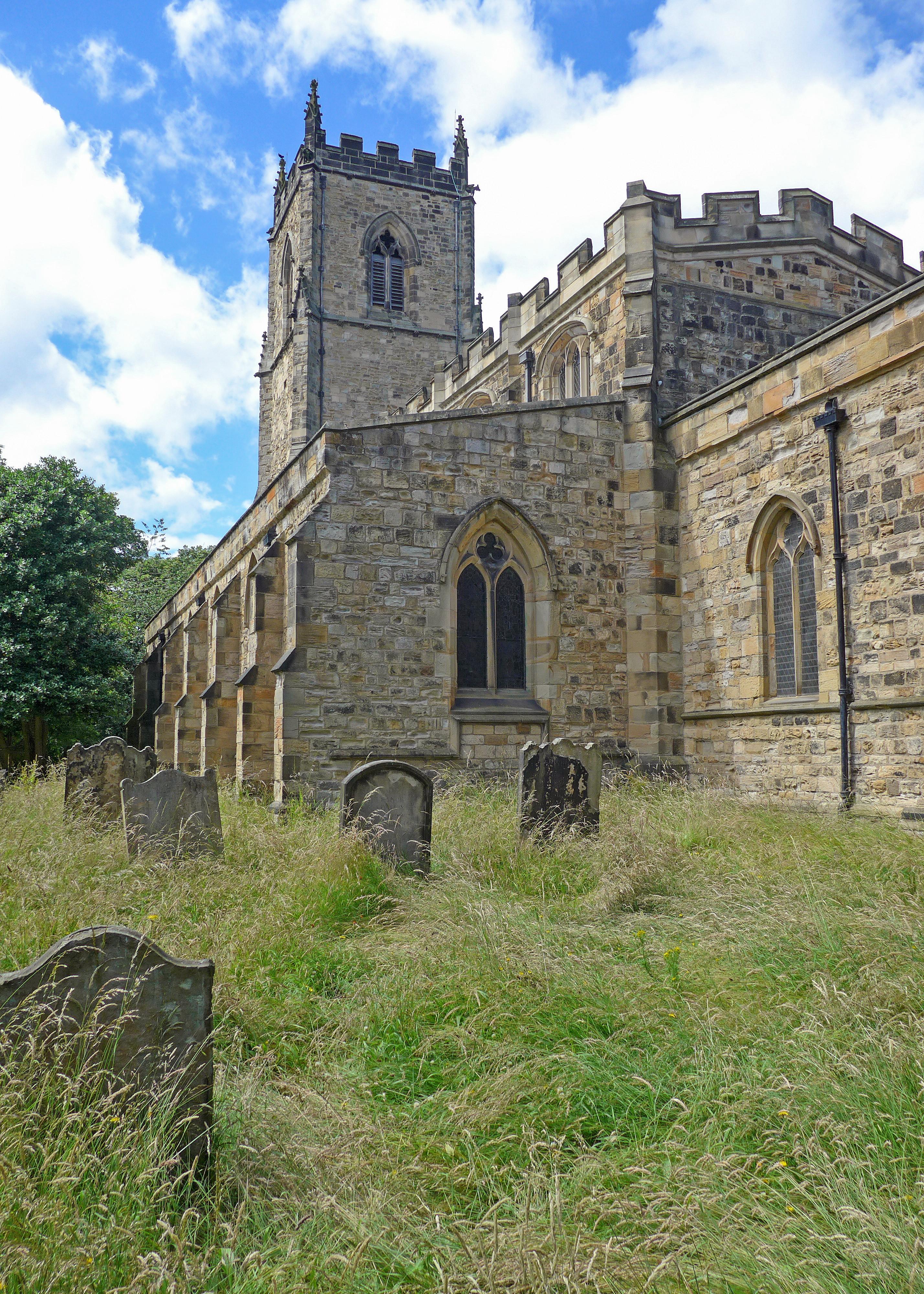St Cuthbert
Durham, County Durham

A 12th century church with fine stained glass, woodwork, sculpture and bells and a beautiful and interesting churchyard.
Durham, County Durham
It is likely that there was an AngloSaxon church here, possibly a wooden one. The earliest parts of the building now visible are the late 12th century chancel arch and columns and arches at the east end of the nave. The tower is 15th century. The church was extensively rebuilt in the 1830s by Ignatius Bonomi. Statues (1864) of St Oswald, 7th century Northumbrian warrior king, and St Cuthbert adorn buttresses at the east end. Notable interior features: 14th and 15th century roof carvings (angels and grotesque masks), 15th century choir stalls and parish chest with 3 locks, brightly coloured royal arms made in 1660, sculpted stone grave covers from 12th to 15th century displayed at the back of the church and a window by William Morris & Co with panels designed by Ford Madox Brown telling the story of the life of St Oswald. Other windows are by Clayton & Bell, Kempe & Co and Wippell Mowbray, a colourful depiction of the account of the creation of the world in the Book of Genesis. Two windows and a photograph commemorate John Bacchus Dykes, well known hymn tune composer, vicar here in the 19th century, whose grave is in the park across the road. The tower 8 bells were cast in 1977; two of the previous bells, cast in 1694 by Christopher Hodson, are displayed at the back of the church. The large, leafy churchyard, with paths leading to the river has interesting 17th-19th century gravestones.
Durham, County Durham
Durham, County Durham
Durham Cathedral is of the finest examples of Romanesque architecture in Europe, renowned for its spectacular location at the heart of the Durham UNESCO World Heritage Site, visit and you’ll soon discover why Bill Bryson described this magnificent place as the ‘best cathedral on planet earth’!
Durham, County Durham
Durham Castle has two chapels. The Norman Chapel is older than the cathedral. with unusual carvings.